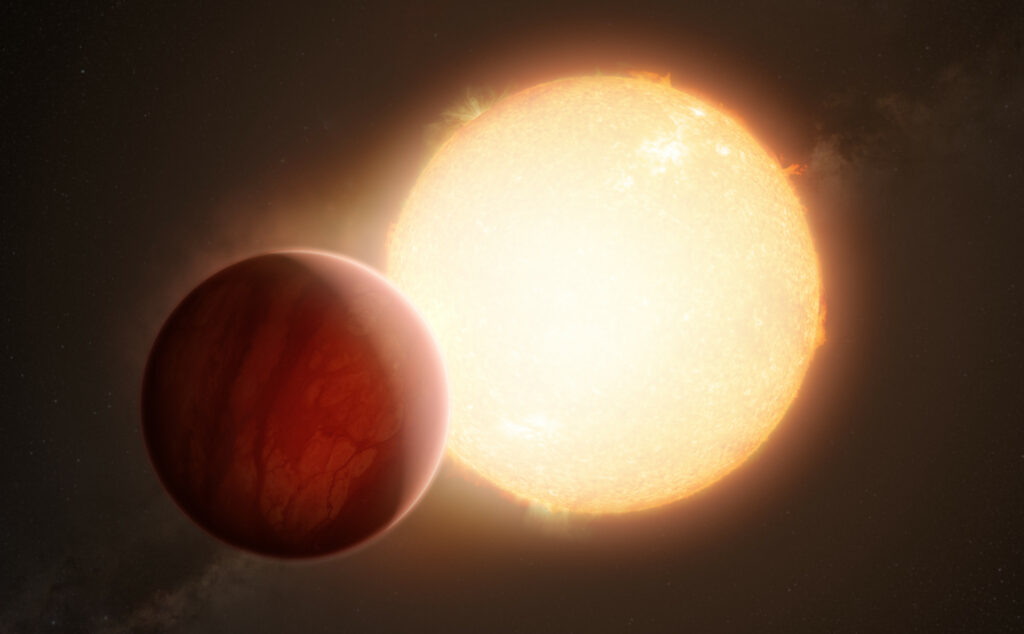Thanks to the TESS telescope, an international team of astronomers has discovered a previously unknown exoplanet, designated TOI-3261b. It represents the so-called ultra-hot Neptune.

TESS searches for exoplanets using the transit method — by periodic fluctuations in the stars’ light caused by the transits of their companions. During its operation, the telescope has discovered more than 7,200 candidate exoplanets, of which 482 have been confirmed. Recently, this list has been supplemented by one more position.
The discovery was made during the study of the orange dwarf, located at a distance of 970 light years from Earth. Its mass is about 13% less than that of the Sun, and its age is estimated at 6.5 billion years.
After studying TESS data on the change in the light curve of the orange dwarf and after their subsequent verification with ground-based telescopes, scientists have concluded that an exoplanet orbits around it. It has a radius of about 3.82 Earth’s radius and is only 2% smaller than Neptune. At the same time, the mass of the newly discovered exoplanet is unusually high for bodies of this size. It has 30.3 Earth masses. That gives it an average density of 3 g/cm³.
TOI-3261b has an orbital period of 0.88 days. Thus, it was classified as an exoplanet with an ultrashort period. To date, astronomers know of only four such objects the size of Neptune. Because of its proximity to the star, TOI-3261b’s atmosphere is heated to very high values. Its equilibrium temperature is estimated to be almost 1500 °C. This is comparable to the melting point of nickel.
Based on the data collected, astronomers hypothesize that TOI-3261 b has a gaseous shell with a core potentially enriched with water. They estimate that this gaseous shell accounts for about 5% of the planet’s total mass. Overall, TOI-3261 b is an excellent target for follow-up observations with the Jamew Webb telescope.
According to Phys.org


